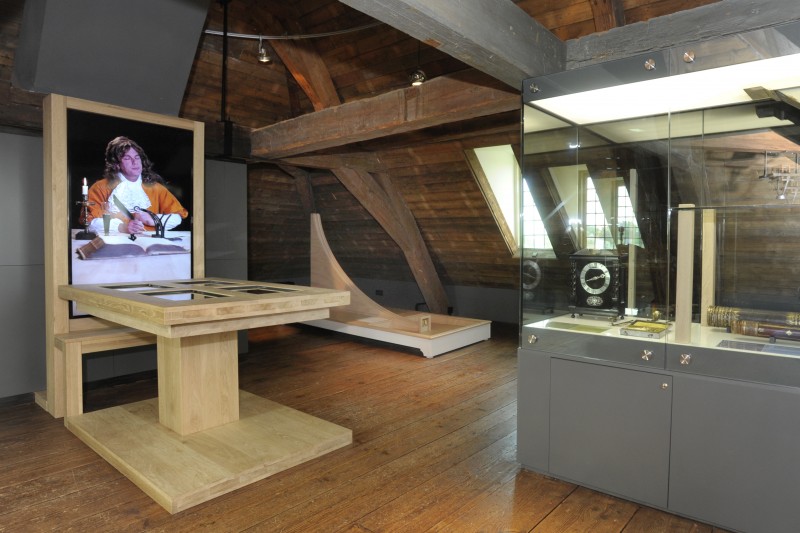
What is there to see?
What is there to see?
The Age of Constantijn
Is it possible to experience the 17th-century Netherlands through the eyes of just one man? Maybe, if that man is Constantijn Huygens! As a poet, composer and art lover, he was at the heart of cultural and artistic society. In his role as secretary and advisor to the princes of Orange, he experienced the major political and military developments of the time at first hand. And as a diplomat and networker, he was in close contact with intellectuals throughout Europe.
The permanent exhibition The Age of Constantijn deals with all these aspects of Constantijn's life and work. Surrounded by the family portraits and other artefacts, you can listen to moving poetry, read about the exciting life that Constantijn led with the princes of Orange and be amazed by well over than 100,000 letters he wrote during his lifetime. And all this while enjoying spectacular views over the Hofwijck gardens.

Christiaan under the Stars
Christiaan Huygens is considered to be one of the greatest scientists in the history of the Netherlands. He lived at Hofwijck during the last eight years of his life. The attic at the top of the building, where Christian kept his collection of telescopes, is now home to the exhibition Christiaan under the Stars.
Amidst the collection of authentic seventeenth-century clocks and telescopes, children and adult visitors can experience the joys of discovery and invention, just as Christiaan did in his day. How exactly did his invention of the pendulum clock work? How did he discover the Rings of Saturn? What is the principle of the magic lantern? And how did Christiaan live and work at Hofwijck?

The icehouse
During the first half of the 17th century, in the period known as the Little Ice Age, winters in the Netherlands were often extremely cold. Owners of country estates turned this phenomenon to their own advantage. During the winter they would order ice from the estate ponds to be cut and stored in the icehouse, where it was used for the conservation of perishable foodstuffs. The ice often lasted until well into the summer. The icehouse at Hofwijck is situated under the sloping bridge ascending to the front door. Its proximity to the kitchen is unique on the one hand, but very practical on the other and thus a living example of Constantijn’s ingenuity.
When money ran out during a restoration of the Huygens’ Hofwijck around 1920, the icehouse was filled with sand and for almost a century it was completely forgotten. It was not until the spring of 2015 that it was emptied of sand and restored to its former glory, making Hofwijck once again the proud owner of an icehouse.
Each year during December, Hofwijck is transformed into a Christmas wonderland. A Christmas tree takes pride of place in the Pronkzaal and the rest of the house is decorated with Christmas foliage. The square at the entrance to the house is lit up with seasonal lighting.
In the house itself you can see the Christmas exhibition. Hofwijck is hosting a range of activities in the Christmas season, including a special programme for the Voorburg by Candlelight evening (on Christmas Eve) and Boxing Day.
We don't know how Constantijn Huygens, the architect of Hofwijck, celebrated Christmas with his family. In his diaries we can read that he was working at Christmas. However, the poet Huygens wrote a beautiful poem about Christmas.


